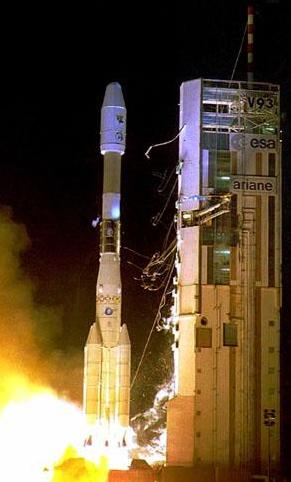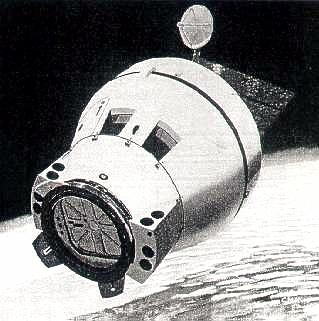Copyright 2015 Robert Clark
Two versions would work for a fully liquid fueled launcher, the Ariane 42L and Ariane 44L, the first with two liquid-fueled side boosters and the second one with four. Versions of the Ariane 4 using solid side boosters were also made however for this manned spaceflight application I'm only considering all-liquid fueled launchers.
According to Astronautix, the Ariane 42L could carry 7,900 kg to LEO and the Ariane 44L, 10,200 kg.
Ariane 42L V56
Ariane 42L V56 - COSPAR 1993-031
Ariane 42L V56 - COSPAR 1993-031
Ariane 44L
Credit: Arianespace
Credit: Arianespace
A crewed version of the Cygnus capsule probably could be produced to mass in the range of 2,000 kg dry mass:
Budget Moon flights: lightweight crew capsule.
http://exoscientist.blogspot.com/2013/04/budget-moon-flights-lightweight-crew.html
Bob Clark
UPDATE, February 10, 2015:
In regards to the question of the suitability of the Ariane 4 for manned missions, i.e., whether it could be man-rated, note that it was considered for the purpose in the 1980's:
Multi-Role Recovery Capsule - BAe,1987.
Credit: NASA via Marcus Lindroos
British manned spacecraft. Study 1987. Britain was the only European Space Agency member opposed to ESA's ambitious man-in-space plan, and the British conservative government refused to approve the November 1987 plan.
However, the British aerospace industry did propose some interesting alternatives, such as the $2-billion 'Multi-Role Recovery Capsule'.
British Aerospace Ltd. (BAe) regarded the French Hermes mini-Shuttle as too expensive and complicated. Instead, they felt a simple crew capsule would make more sense as an 8-man 'lifeboat' for Space Station Freedom (NASA issued a competitive request for proposals in late 1987). MRC was to be launched on the existing Ariane-40 rocket and the capsule could be flown manned or unmanned, for sensitive microgravity experiments in orbit.
http://www.astronautix.com/craft/mulpsule.htm







No comments:
Post a Comment